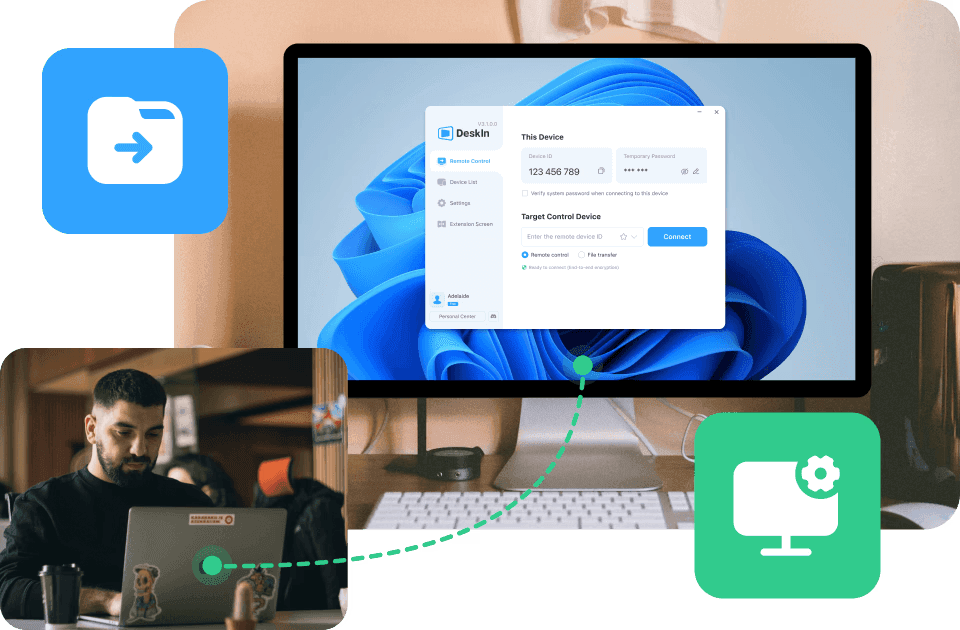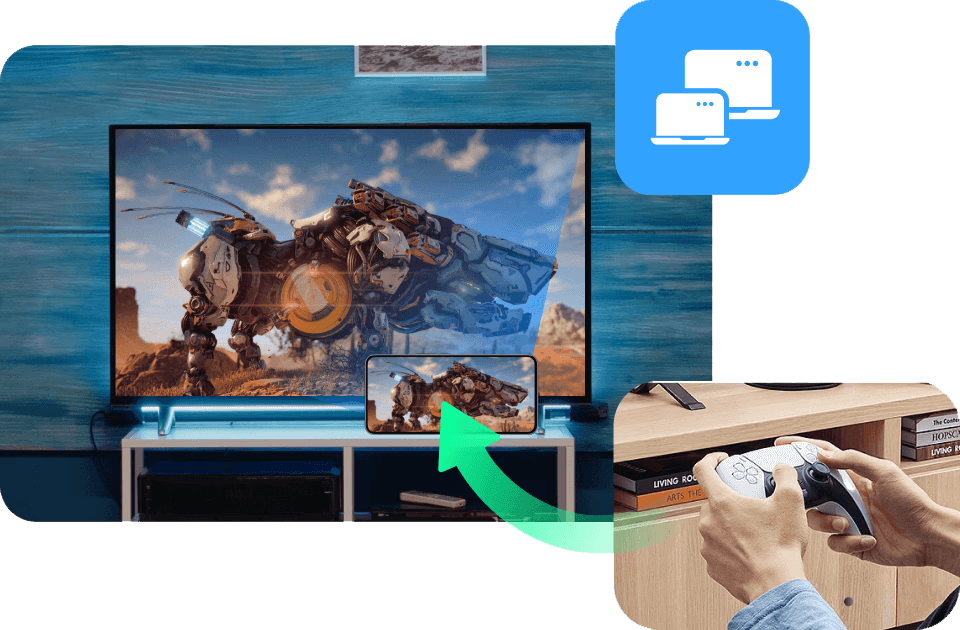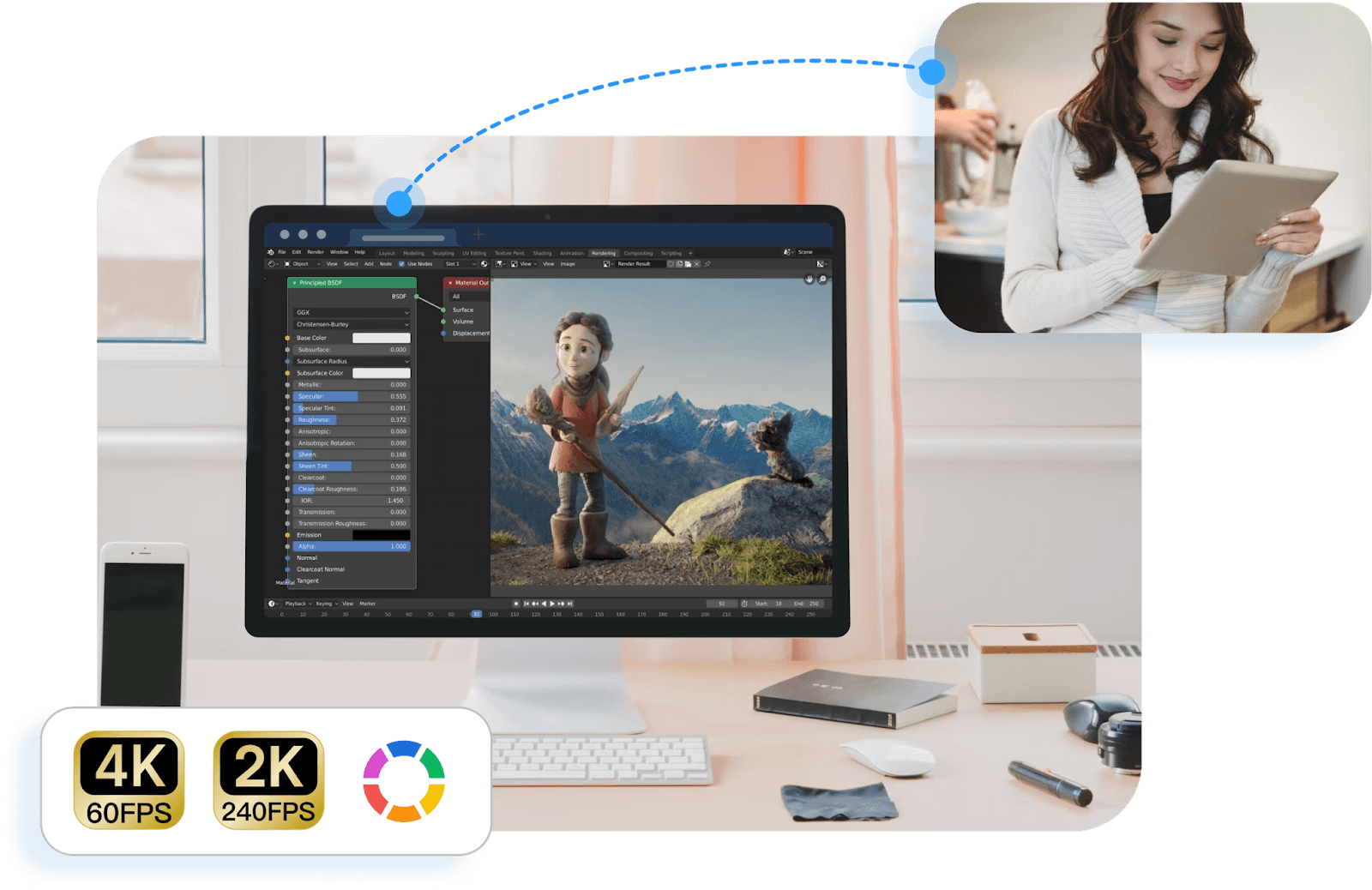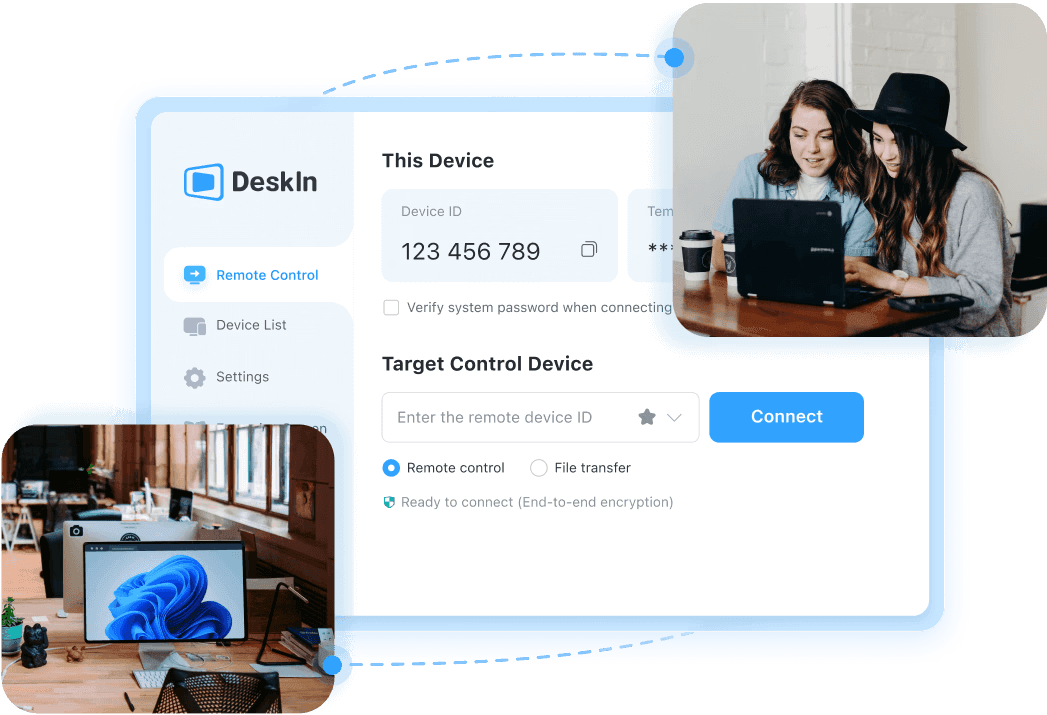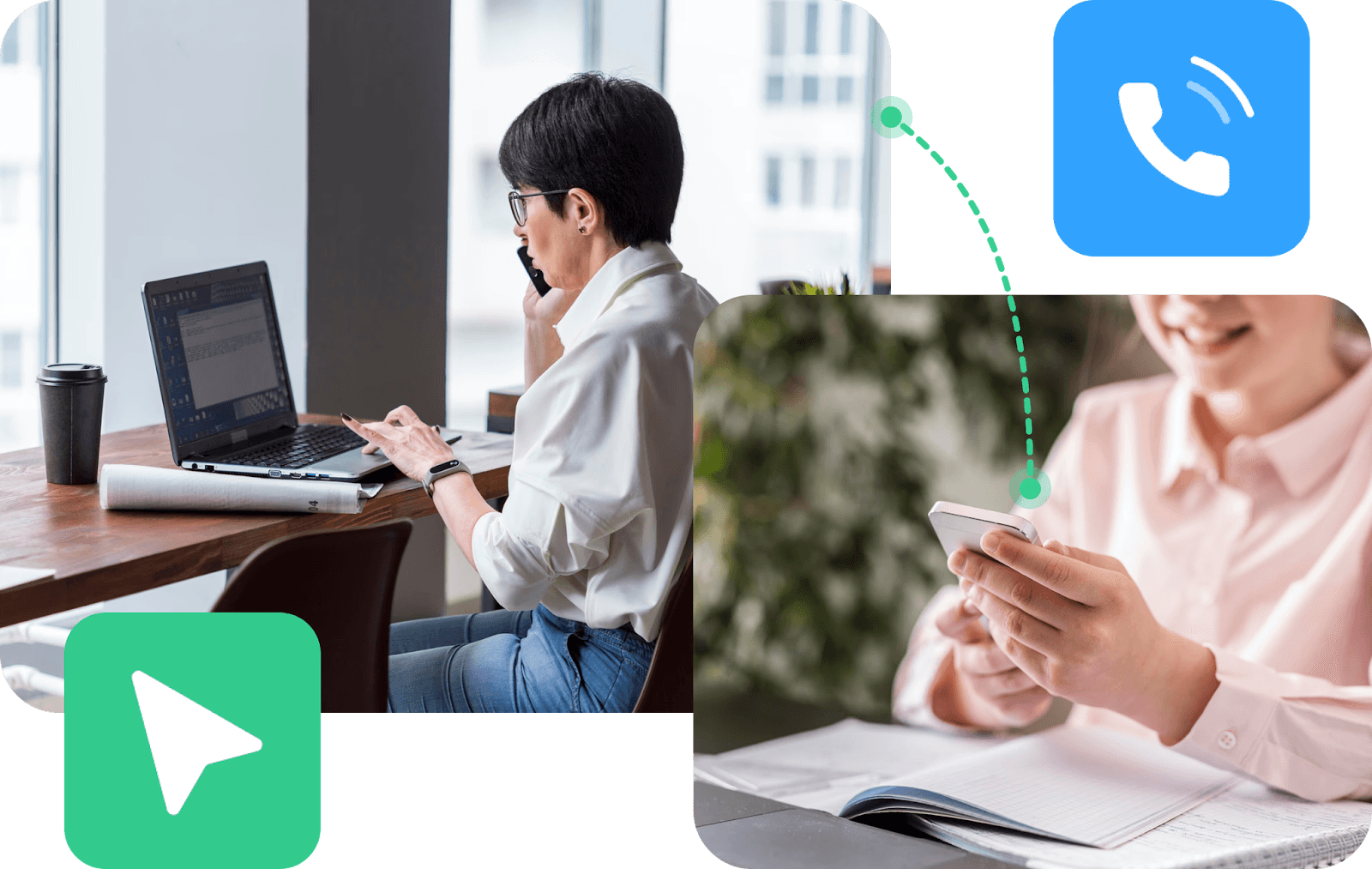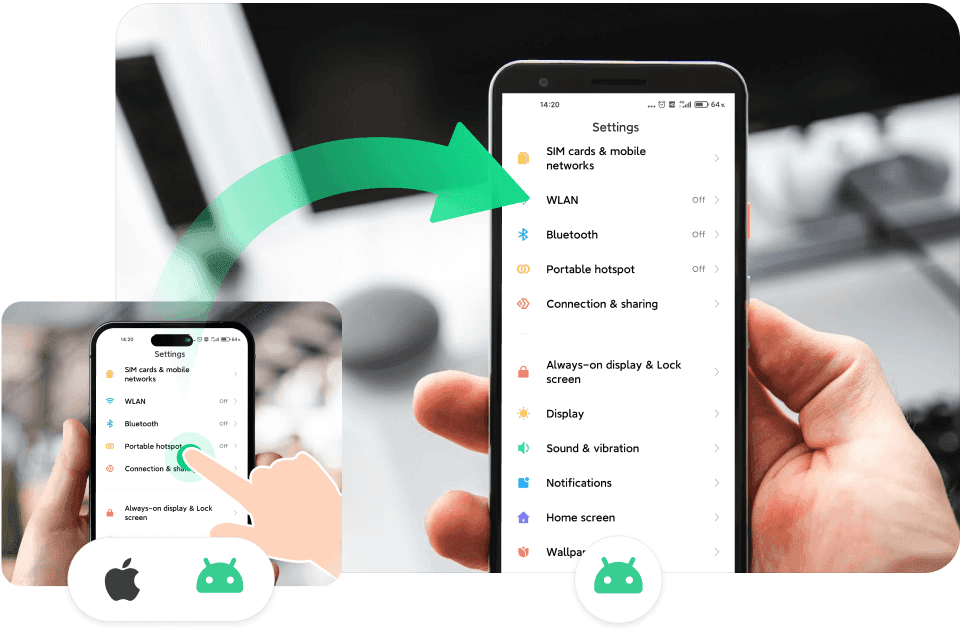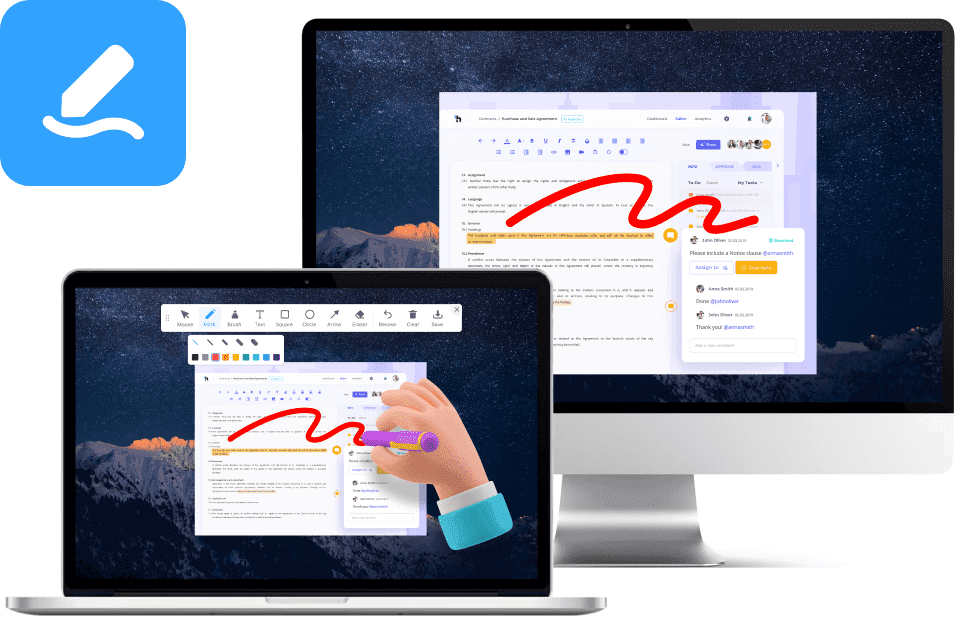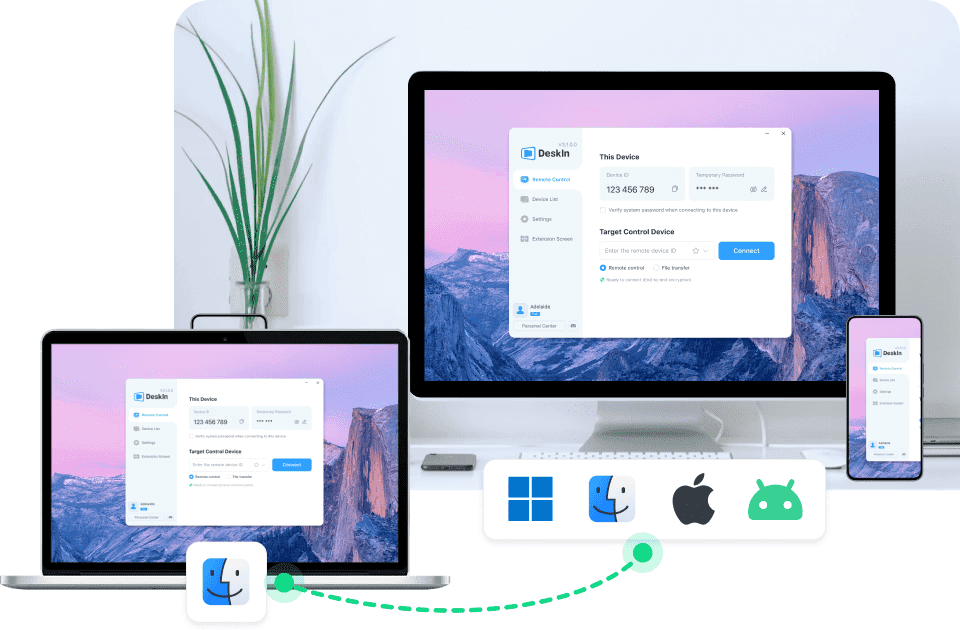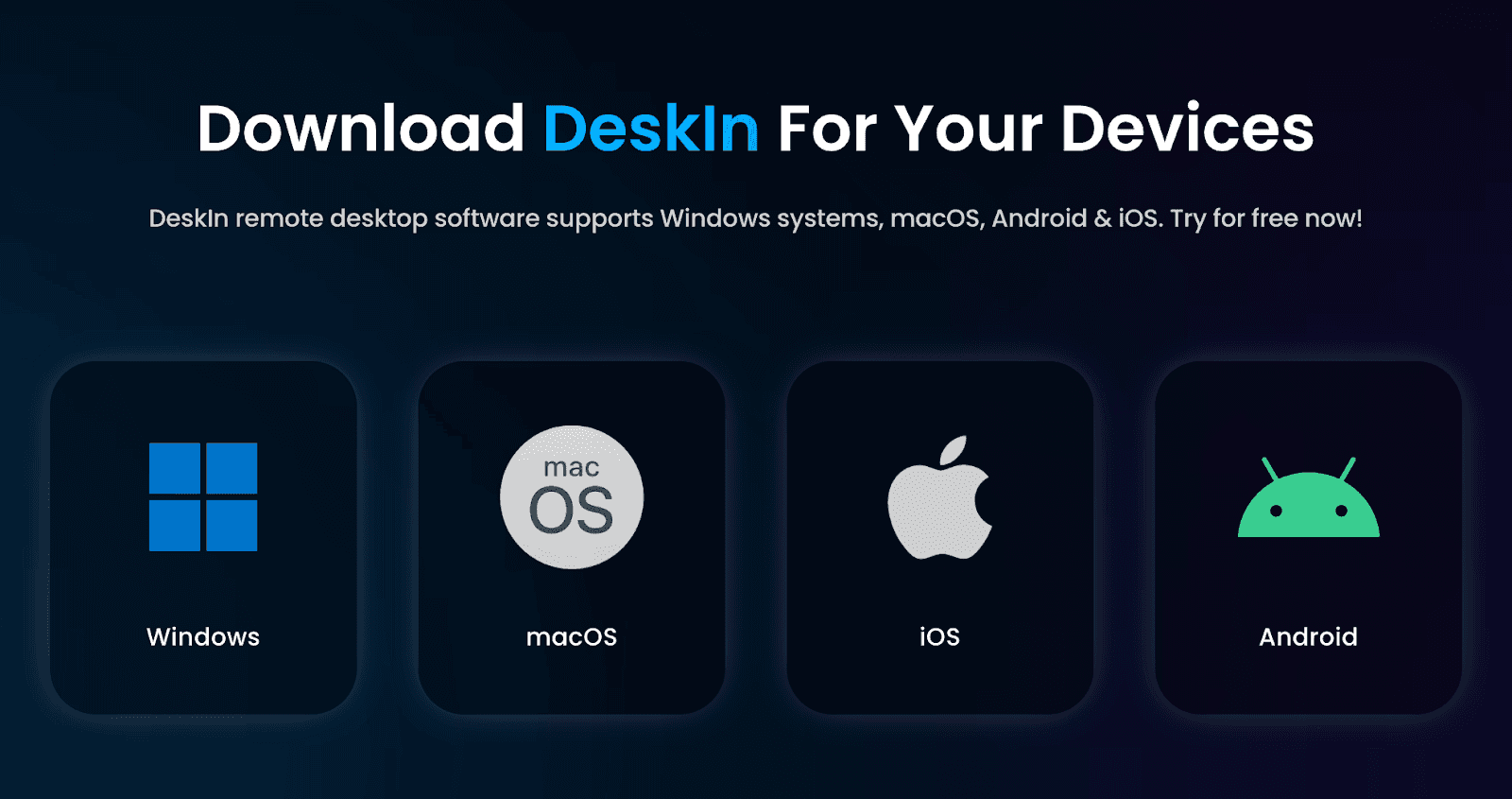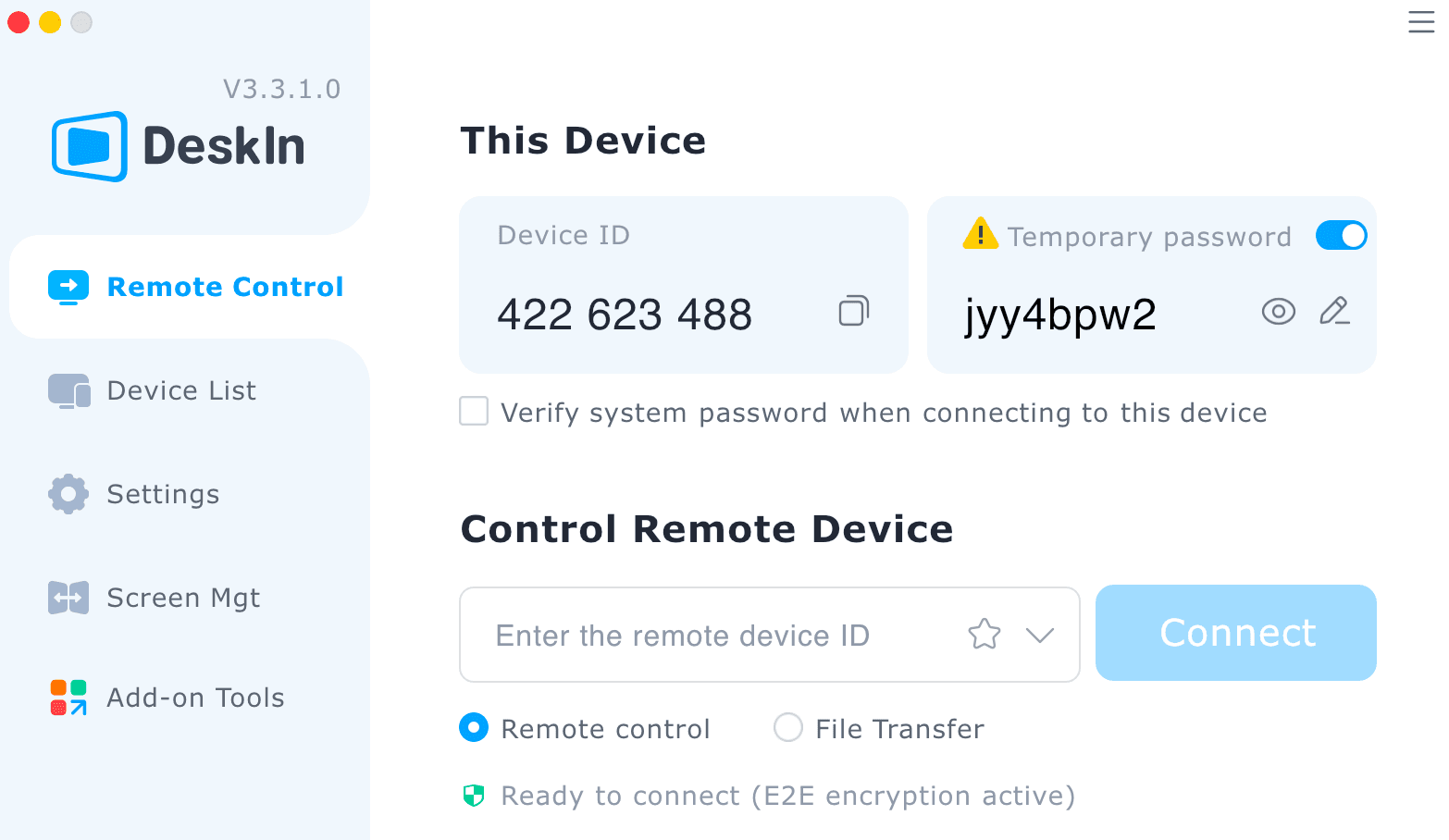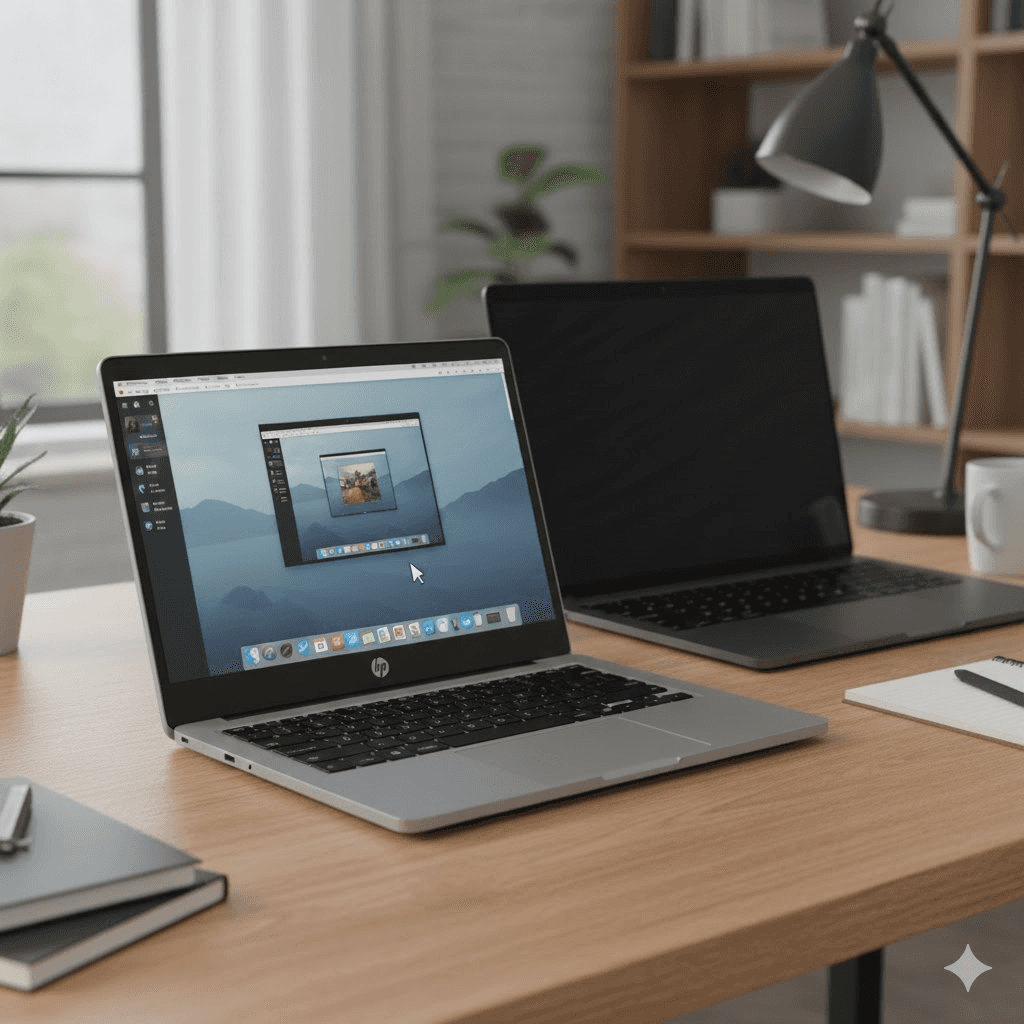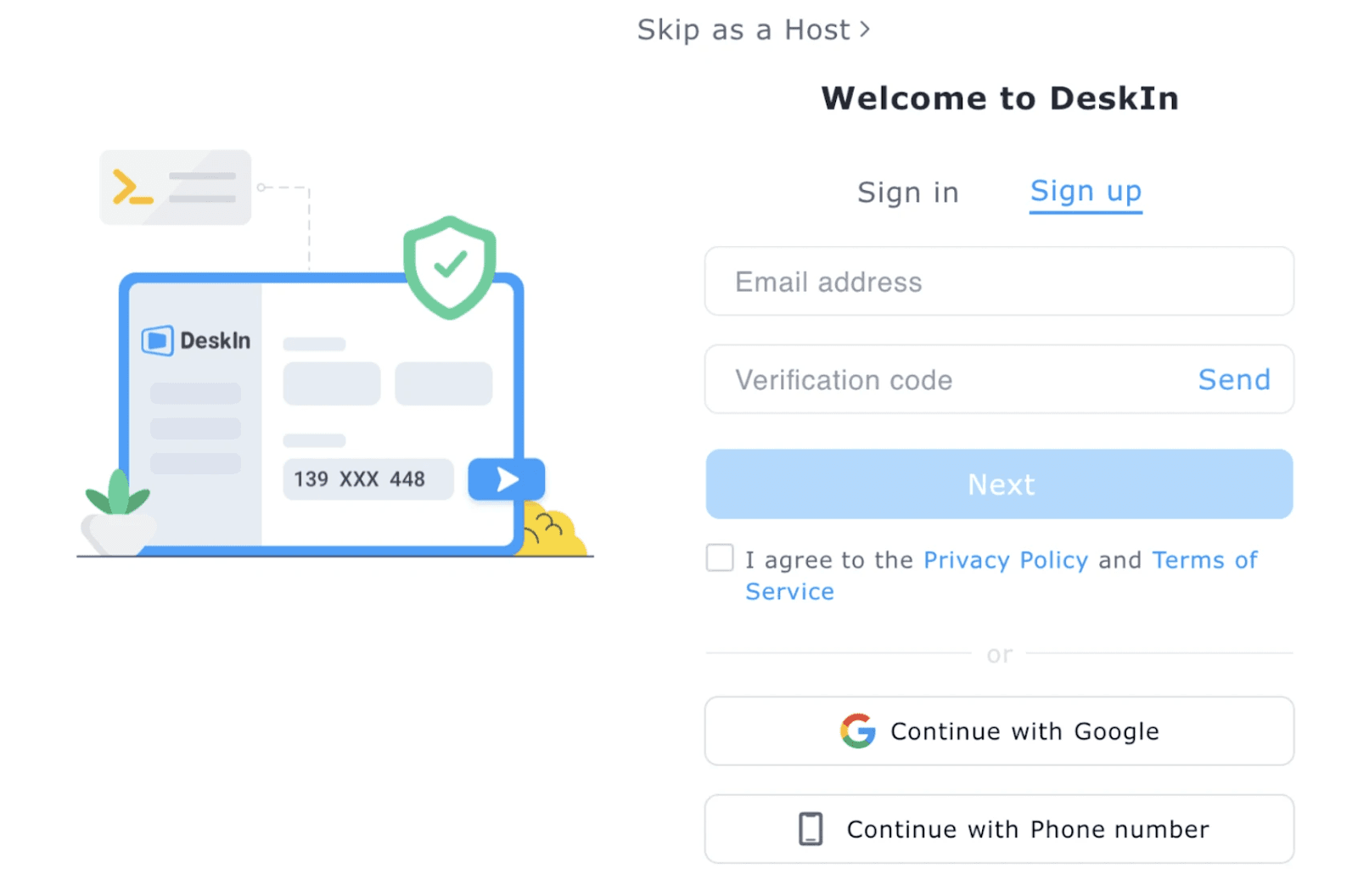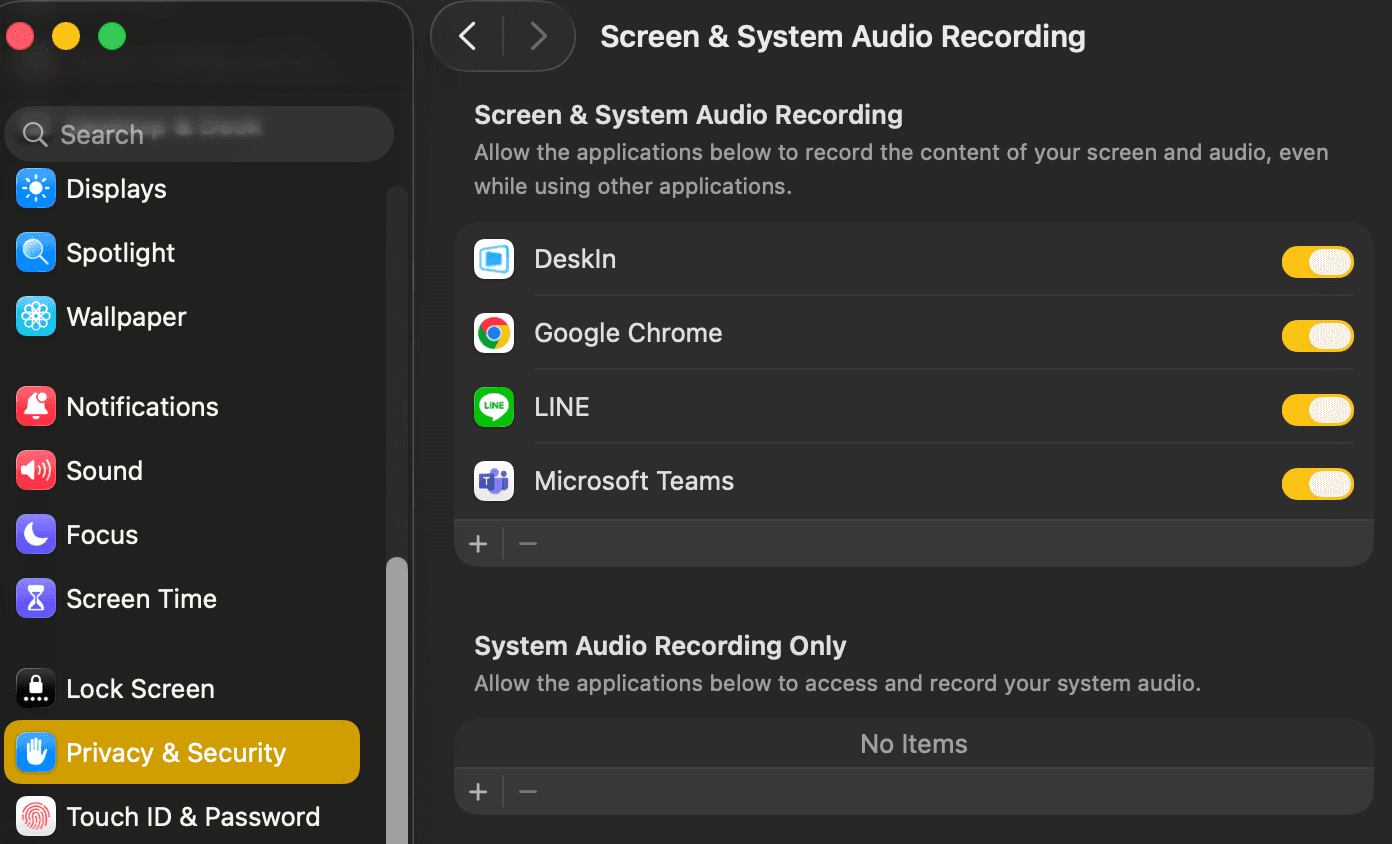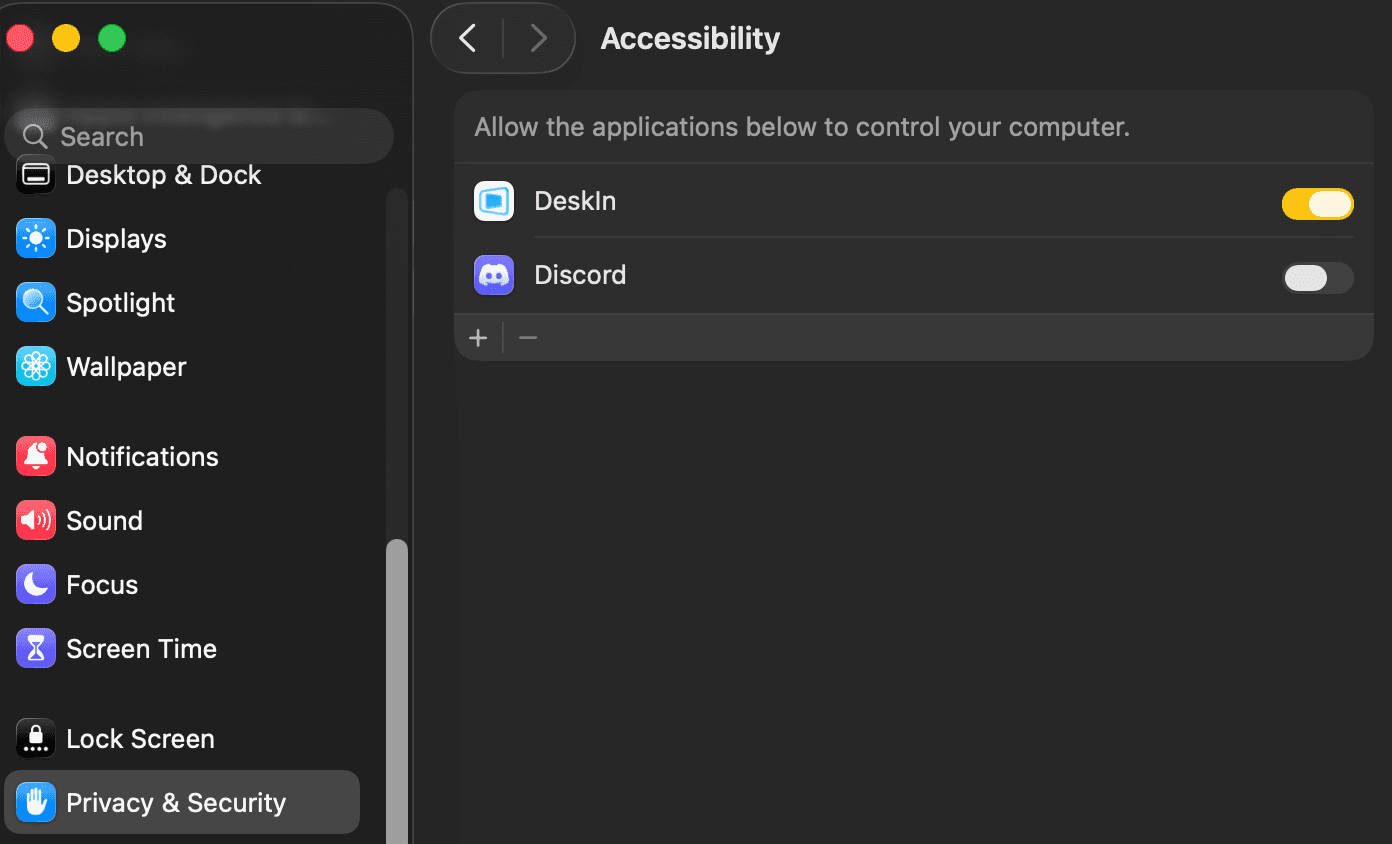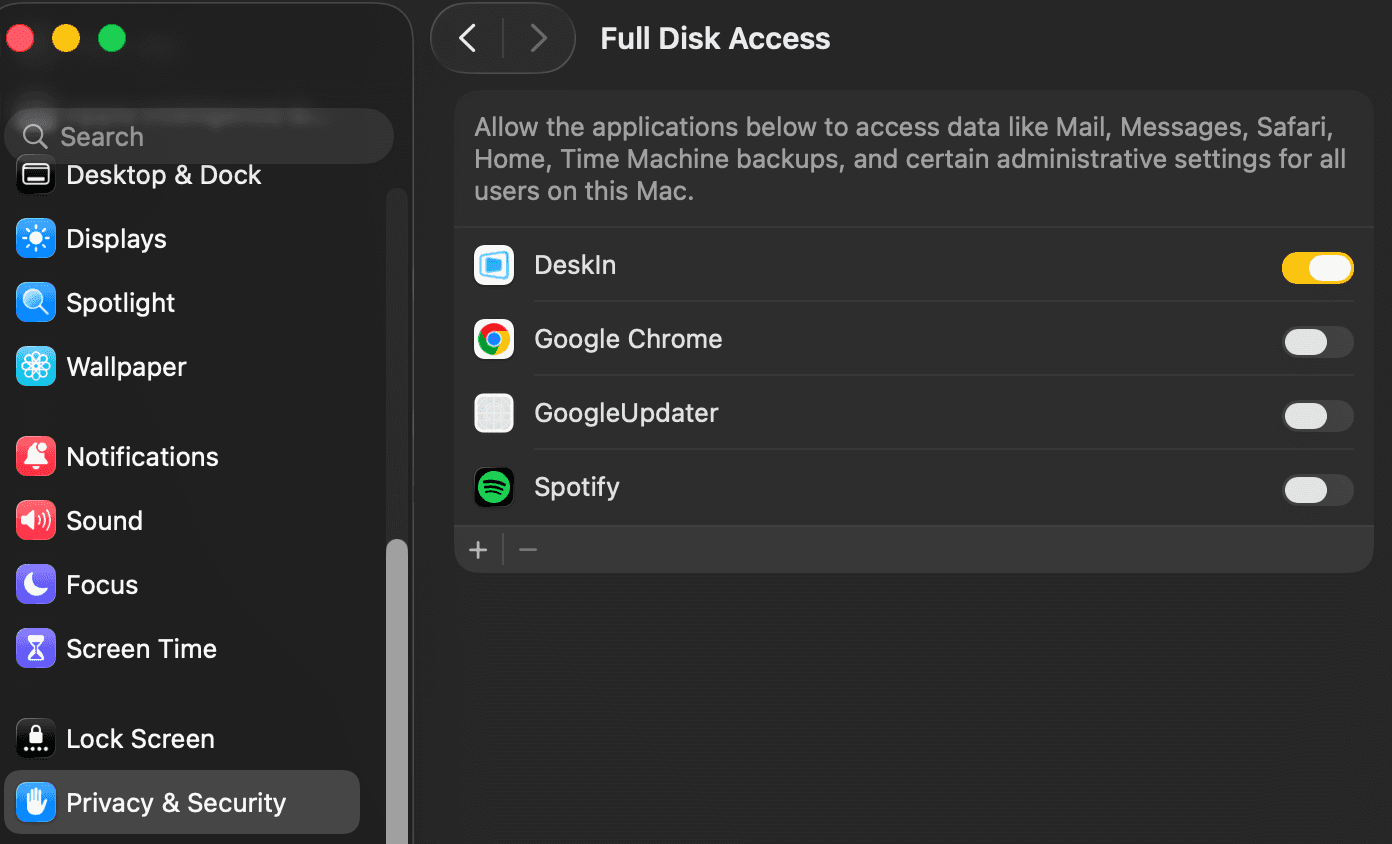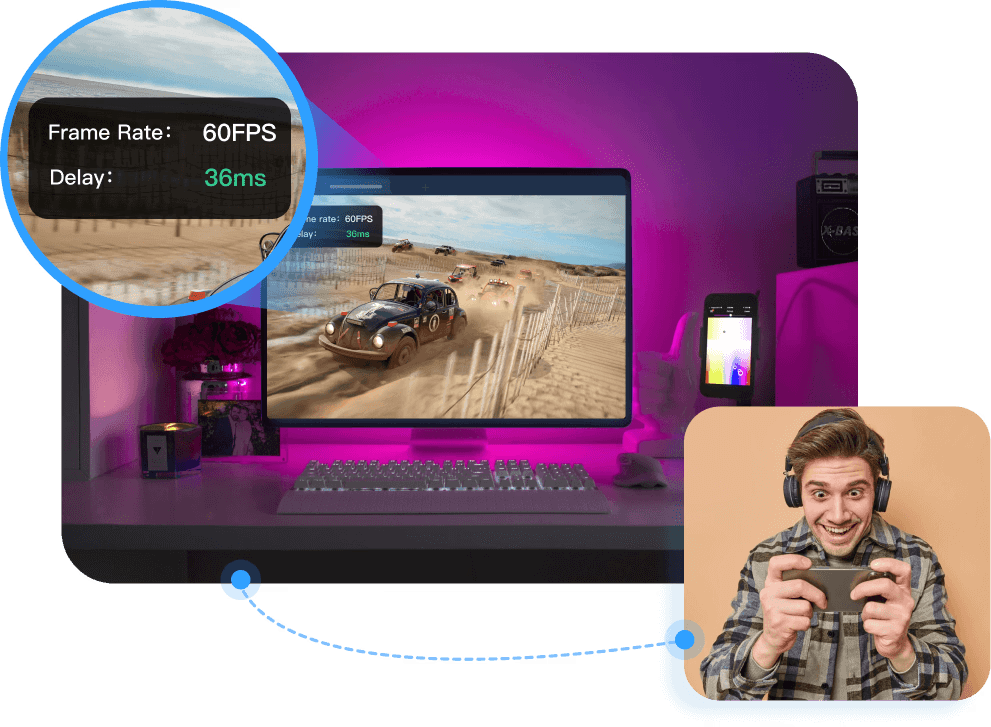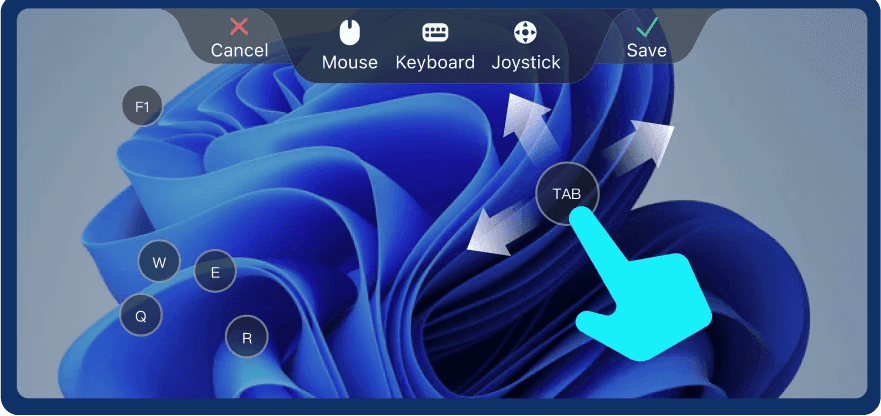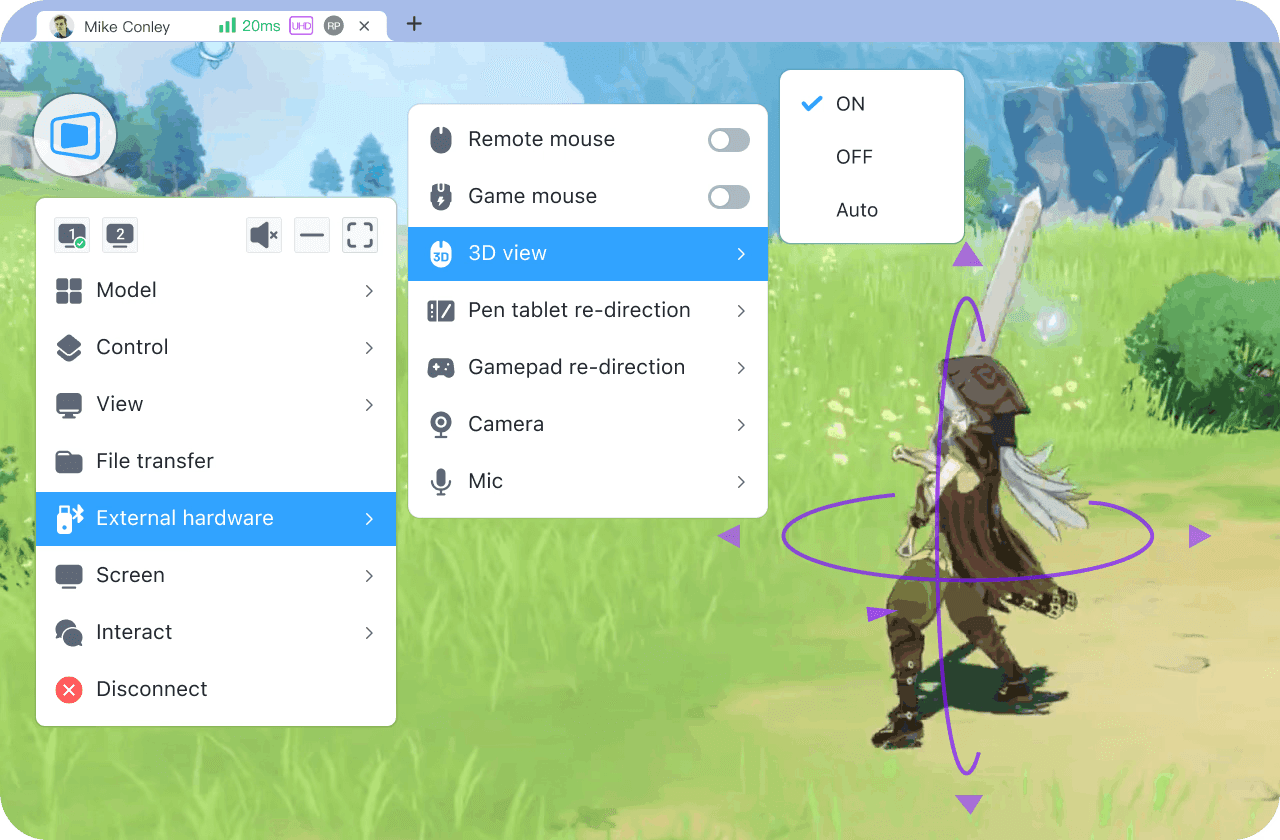Want to share photos, videos, or presentations from your Android phone on a bigger screen? Screen mirroring apps make it easy by wirelessly casting your device's display to a computer or a TV. If you would like to give a business demo, binge-watch videos, or game with friends, these apps can definitely offer a smooth, high-quality viewing experience.
But with so many options available, how to pick the best Android casting app? To save you time, we've tested and handpicked the 5 best screen mirroring apps for Android. In this post, we'll break down their key features, pros and cons, and pricing. Then you can choose the perfect one for your needs. Ready to find your ideal screen mirroring tool? Let's dive in!
💪 Do not miss:
Top 1. DeskIn: Fast, Easy, and Safe with Free Trial
DeskIn is a powerful yet best mirror screen app for Android that can be used across Android, Windows, macOS, and iOS devices. Whether you want to cast your phone to a bigger screen for gaming, streaming, or work, DeskIn delivers smooth, high-quality performance with up to 4K resolution and ultra-low latency (under 40ms).
Setting it up is also a breeze, making it perfect for beginners. Simply scan a QR code or a tap to connect wirelessly. Security is also a priority, 256-bit encryption is applied to ensure safe remote sessions. Beyond screen mirroring, DeskIn offers other handy features like remote control, voice chat, annotation tools, and shared clipboard, making it a versatile tool for both personal and professional use.


💡 Pros:
Multi-OS Compatibility – Works across Android, iOS, Windows, and macOS.
High-Quality Streaming – Supports 4K resolution with <40ms latency.
Easy Wireless Connection – No cables needed; just scan or use a tap.
Secure Remote Access – Encrypted with 256-bit security.
Extra Collaboration Tools – Remote control, annotations, voice chat, and more.
Cons:
Some advanced functions require a paid plan.
Price:
A free trial is available for personal users.
Top 2. Google Home: Free and Simple
If you're deep into the Google ecosystem, Google Home is the best free mirror screen app for Android you should try. It allows you to cast your Android screen to Chromecast or Google Nest devices. Whether you're streaming YouTube, sharing vacation photos, or mirroring a mobile game on your TV, it works wirelessly with just a tap. Since it's built for Google products, setup is instant. Plus, you can use voice commands with Google Assistant for hands-free control.
While it's great for basic casting, it lacks some advanced features like remote control or annotations. Still, if you want a simple way to mirror your Android screen within the Google ecosystem, you can give it a go.

💡 Pros:
Support seamless Google integration.
Cast your screen using Google Assistant commands.
No cables or complex configurations needed.
Cons:
Doesn't support non-Google displays.
No remote control, annotations, or advanced tools.
Price: Free
Top 3. AirDroid Cast: Best for Android
AirDroid Cast is a popular mirror app for Android, letting you mirror your Android screen to a PC seamlessly. It has gained a renowned reputation, especially for remote meetings and presentations. Whether you're sharing slides, demos, or collaborating with teammates, it works wirelessly or via USB cable for a more stable connection.
Though this best mirror screen app for Android offers a free version, it requires devices to be on the same Wi-Fi. In comparison, the web-based option adds more flexibility. Just open a browser on your PC, enter the casting code, and you're ready to go. No software installation is needed for quick screen sharing.

💡 Pros:
Works wirelessly or uses USB for stability.
App version and web version are available, catering to different needs.
Ideal for presentations, training, and remote support.
Cons:
Ads may pop up.
Wi-Fi restrictions exist for the free version.
The image quality of casting can't be guaranteed.
Price:
Free version is available.
Paid plans start from $2.49/mo.
Top 4. Vysor: Connect Android to PC Easily
Vysor makes it dead simple to screen mirror on Android to Windows PC. With Vysor, you can easily cast Android to a PC for free —Windows, Mac, Linux, or Chromebook. Just plug in via USB (or connect wirelessly with Pro) and instantly see your phone's screen on your desktop.
What sets Vysor apart is the ability to use your mouse and keyboard to navigate your Android device, making it perfect for texting, app testing, or managing files without touching your phone. Need to grab a screenshot or transfer files? Don't miss this best mirror screen app for Android, it handles that too with minimal fuss.

💡 Pros:
Works on Windows, Mac, Linux & Chromebook.
Navigate your Android device from your PC using a mouse or keyboard.
Offer extra utilities – screenshot capture & file transfer built-in.
Cons:
Unavoidable banners unless you upgrade.
USB connection is free, but wireless requires Pro.
Price:
A free plan
Paid plans start from $2.50/mo.
Top 5. LetsView: Free with Watermark
LetsView makes screen mirroring pretty easy – just 3 steps and you're done. Whether you want to screen share Windows, cast your Android phone to a PC (Windows, Mac, Linux), tablet, or even an Android TV, it works seamlessly over the same Wi-Fi network. Gamers will love the near-zero latency, meaning no frustrating delays during mobile gameplay on a larger display. Plus, it stays reliably connected for hours, with no random drop-offs mid-movie or presentation.
While it's great for wireless mirroring, it doesn't support USB connections, and the free version has a watermark. Still, for quick, stable screen sharing, LetsView is the best mirror screen app for Android.

💡 Pros:
Easy to use.
Works on PCs, tablets, and Android TVs.
Smooth streaming for hours without disconnects.
Cons:
Wi-Fi only; not ideal for weak networks.
Watermark is on the free version.
Price:
Free version
Pro versions starts from $5.99/mo.
Verdict: Which is the Best Mirror Screen App for Android?
To help you make an informed decision, we've compared the best mirror apps for Android in the table below. Take a look before deciding.
DeskIn | Google Home | AirDroid Cast | Vysor | LetsView | |
Supported OS | Android, Windows, Mac, iOS | Android, Google Devices | Android, Windows, Mac, iOS | Android & all operating systems | Android, Windows, Mac, iOS, Android TV |
Wireless Support | ✔️ | ✔️ | ✔️ | ✔️ Pro version only | ✔️ |
USB Cable Option | ❌ | ❌ | ✔️ | ✔️ | ❌ |
4K Resolution | ✔️ | ❌ HD Only | ❌ Up to 1080p | ❌ | ❌ Up to 1080p |
No Lag Performance | ✔️ <40ms latency | ❌ Depends on the network | ❌ Occasional lag | ❌ Occasional lag | ✔️ Low latency |
Choosing the best mirror screen app for Android depends on your needs. If you're a Google Home user, the Google Home app offers simple casting to Chrome cast devices. AirDroid Cast works well for remote meetings, while LetsView is perfect for quick, lag-free streaming to TVs and computers.
For the most versatile option, we recommend DeskIn. It works across Android, Windows, Mac, and iOS with 4K quality and ultra-low latency. These features make it an ideal choice for gaming, movies, or work. With 56-bit encryption, you can enjoy a safe screen mirroring journey. Whether you're mirroring, collaborating, or just enjoying content, DeskIn delivers a smooth, high-quality experience. Ready to upgrade your mirror screening? Try DeskIn today!

Want to share photos, videos, or presentations from your Android phone on a bigger screen? Screen mirroring apps make it easy by wirelessly casting your device's display to a computer or a TV. If you would like to give a business demo, binge-watch videos, or game with friends, these apps can definitely offer a smooth, high-quality viewing experience.
But with so many options available, how to pick the best Android casting app? To save you time, we've tested and handpicked the 5 best screen mirroring apps for Android. In this post, we'll break down their key features, pros and cons, and pricing. Then you can choose the perfect one for your needs. Ready to find your ideal screen mirroring tool? Let's dive in!
💪 Do not miss:
Top 1. DeskIn: Fast, Easy, and Safe with Free Trial
DeskIn is a powerful yet best mirror screen app for Android that can be used across Android, Windows, macOS, and iOS devices. Whether you want to cast your phone to a bigger screen for gaming, streaming, or work, DeskIn delivers smooth, high-quality performance with up to 4K resolution and ultra-low latency (under 40ms).
Setting it up is also a breeze, making it perfect for beginners. Simply scan a QR code or a tap to connect wirelessly. Security is also a priority, 256-bit encryption is applied to ensure safe remote sessions. Beyond screen mirroring, DeskIn offers other handy features like remote control, voice chat, annotation tools, and shared clipboard, making it a versatile tool for both personal and professional use.


💡 Pros:
Multi-OS Compatibility – Works across Android, iOS, Windows, and macOS.
High-Quality Streaming – Supports 4K resolution with <40ms latency.
Easy Wireless Connection – No cables needed; just scan or use a tap.
Secure Remote Access – Encrypted with 256-bit security.
Extra Collaboration Tools – Remote control, annotations, voice chat, and more.
Cons:
Some advanced functions require a paid plan.
Price:
A free trial is available for personal users.
Top 2. Google Home: Free and Simple
If you're deep into the Google ecosystem, Google Home is the best free mirror screen app for Android you should try. It allows you to cast your Android screen to Chromecast or Google Nest devices. Whether you're streaming YouTube, sharing vacation photos, or mirroring a mobile game on your TV, it works wirelessly with just a tap. Since it's built for Google products, setup is instant. Plus, you can use voice commands with Google Assistant for hands-free control.
While it's great for basic casting, it lacks some advanced features like remote control or annotations. Still, if you want a simple way to mirror your Android screen within the Google ecosystem, you can give it a go.

💡 Pros:
Support seamless Google integration.
Cast your screen using Google Assistant commands.
No cables or complex configurations needed.
Cons:
Doesn't support non-Google displays.
No remote control, annotations, or advanced tools.
Price: Free
Top 3. AirDroid Cast: Best for Android
AirDroid Cast is a popular mirror app for Android, letting you mirror your Android screen to a PC seamlessly. It has gained a renowned reputation, especially for remote meetings and presentations. Whether you're sharing slides, demos, or collaborating with teammates, it works wirelessly or via USB cable for a more stable connection.
Though this best mirror screen app for Android offers a free version, it requires devices to be on the same Wi-Fi. In comparison, the web-based option adds more flexibility. Just open a browser on your PC, enter the casting code, and you're ready to go. No software installation is needed for quick screen sharing.

💡 Pros:
Works wirelessly or uses USB for stability.
App version and web version are available, catering to different needs.
Ideal for presentations, training, and remote support.
Cons:
Ads may pop up.
Wi-Fi restrictions exist for the free version.
The image quality of casting can't be guaranteed.
Price:
Free version is available.
Paid plans start from $2.49/mo.
Top 4. Vysor: Connect Android to PC Easily
Vysor makes it dead simple to screen mirror on Android to Windows PC. With Vysor, you can easily cast Android to a PC for free —Windows, Mac, Linux, or Chromebook. Just plug in via USB (or connect wirelessly with Pro) and instantly see your phone's screen on your desktop.
What sets Vysor apart is the ability to use your mouse and keyboard to navigate your Android device, making it perfect for texting, app testing, or managing files without touching your phone. Need to grab a screenshot or transfer files? Don't miss this best mirror screen app for Android, it handles that too with minimal fuss.

💡 Pros:
Works on Windows, Mac, Linux & Chromebook.
Navigate your Android device from your PC using a mouse or keyboard.
Offer extra utilities – screenshot capture & file transfer built-in.
Cons:
Unavoidable banners unless you upgrade.
USB connection is free, but wireless requires Pro.
Price:
A free plan
Paid plans start from $2.50/mo.
Top 5. LetsView: Free with Watermark
LetsView makes screen mirroring pretty easy – just 3 steps and you're done. Whether you want to screen share Windows, cast your Android phone to a PC (Windows, Mac, Linux), tablet, or even an Android TV, it works seamlessly over the same Wi-Fi network. Gamers will love the near-zero latency, meaning no frustrating delays during mobile gameplay on a larger display. Plus, it stays reliably connected for hours, with no random drop-offs mid-movie or presentation.
While it's great for wireless mirroring, it doesn't support USB connections, and the free version has a watermark. Still, for quick, stable screen sharing, LetsView is the best mirror screen app for Android.

💡 Pros:
Easy to use.
Works on PCs, tablets, and Android TVs.
Smooth streaming for hours without disconnects.
Cons:
Wi-Fi only; not ideal for weak networks.
Watermark is on the free version.
Price:
Free version
Pro versions starts from $5.99/mo.
Verdict: Which is the Best Mirror Screen App for Android?
To help you make an informed decision, we've compared the best mirror apps for Android in the table below. Take a look before deciding.
DeskIn | Google Home | AirDroid Cast | Vysor | LetsView | |
Supported OS | Android, Windows, Mac, iOS | Android, Google Devices | Android, Windows, Mac, iOS | Android & all operating systems | Android, Windows, Mac, iOS, Android TV |
Wireless Support | ✔️ | ✔️ | ✔️ | ✔️ Pro version only | ✔️ |
USB Cable Option | ❌ | ❌ | ✔️ | ✔️ | ❌ |
4K Resolution | ✔️ | ❌ HD Only | ❌ Up to 1080p | ❌ | ❌ Up to 1080p |
No Lag Performance | ✔️ <40ms latency | ❌ Depends on the network | ❌ Occasional lag | ❌ Occasional lag | ✔️ Low latency |
Choosing the best mirror screen app for Android depends on your needs. If you're a Google Home user, the Google Home app offers simple casting to Chrome cast devices. AirDroid Cast works well for remote meetings, while LetsView is perfect for quick, lag-free streaming to TVs and computers.
For the most versatile option, we recommend DeskIn. It works across Android, Windows, Mac, and iOS with 4K quality and ultra-low latency. These features make it an ideal choice for gaming, movies, or work. With 56-bit encryption, you can enjoy a safe screen mirroring journey. Whether you're mirroring, collaborating, or just enjoying content, DeskIn delivers a smooth, high-quality experience. Ready to upgrade your mirror screening? Try DeskIn today!







